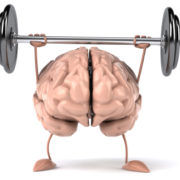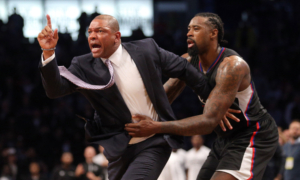Giving Feedback – Why Less is More- Part 3
In this final part of the three-part blog series I will look at implicit feedback, which is feedback that you get from your interaction with the environment. This is a way of getting feedback without conscious awareness of technique.
Implicit learning
One thing that Matt didn’t refer to is this concept of Explicit versus Implicit feedback. If we talk about a speed task for example, when a coach is giving you feedback the coach will either tell you how fast you moved (KR) or tell you ‘how’ you moved (KP). The moment the coach takes responsibility for telling you how you did something- good or bad- they are being ‘explicit’ with you because they are raising your awareness to how you are getting your results. They are talking to you about technique! Whenever we use KP we are doing this!
But what if there was an alternative way to improve technique without conscious awareness of it?……….. This is more related to KR. This is where you don’t provide any feedback on technique as you want full focus on the target.
I think this is the area that has received quite a bit of discussion on in recent years. I will refer back to Part 1 where we were introduced to the idea of the Performance Playground. You don’t always need the spoken words (feedback) about technique from an actual ‘Teacher’ or coach to learn something. Sometimes the environment can be its own teacher.
In a presentation on the APA Philosophy one of the questions I asked was ”How Do We Learn New Skills?” I gave the example of a baby learning to walk and speak, and a young child learning how to ride a bike.
Movement shapes vs. Movement problem
There seems to be an agreement that many of the most important skills we acquire as babies and young children are ‘reflex driven’ meaning the body responds to the environment through perception-action coupling. You learn through trial and error, and slowly getting better.
Experts identify, filter & attend to sensory information quicker as well as have more elaborate skills & greater understanding of strategy to make more effective responses
You could consider these as ‘movement problems’- how to walk or ride a bike without falling over. As parents we don’t tend to get overly concerned with the movement shape- exactly how they should move their arms and legs (knowledge of performance). The achievement of walking or riding a bike a certain distance without assistance would constitute knowledge of results. We give them the outcome but we don’t coach them how to achieve it.
Yet I know myself, that once I have an athlete in a more organised coaching session to develop more advanced skills like sprinting and cutting, I have a habit of making myself central to the coaching experience and want to rush in and correct errors far too soon. I get wrapped up in the perfect movement shape or ‘technical model.’ So suddenly the coaching approach shifts.
Constraints based coaching
One concept that comes up in the literature is constraints based coaching referring to the three main things you can manipulate or constrain in your coaching.
- Athlete
- Task
- Environment
The idea of using ‘constraints’ is to allow more attention to be put on the external environment rather than the internal movement. If you change the task or you manipulate the environment it will promote the desired skill without you necessarily having to raise their awareness to the technique you want. In theory the body will self-organise and figure it out. For example if you play tag in a small space the body is more likely to adopt a shuffle step, and if you make it a constraint that it’s ‘knee tag’ then they are more likely to use their legs to get lower. If you manipulate the task to make the grid bigger and call it shoulder tag you will get more running type movements.
This type of coaching is also referred to as ‘Discovery Learning.’ This creates an ‘Psychophysical’ environment which provides a setting to exploit movement variability as a mechanism to enhance an athlete’s adaptability. Features of coaching in this environment include:
*Movements must be practised
*Adopt non awareness strategy
*Can involve relevant external cues
*Must be sports ‘related’
*Involve problem solving
*Can be reactive
Children do Not learn automatically in FMS
One cautionary point to make in case you have the impression I am suggesting coaches stop giving feedback- using constraints to create a discovery learning based environment doesn’t mean children don’t benefit from receiving feedback on performance!!
Children do not develop automatically in FMS. They need to learn and practice.
Yes skilled movers need to be able to adjust their movements to the changing environment- but that doesn’t mean you can’t teach them how!
Selectively introduce the novice to the right aspects of the environment. This is known as ‘Education of Attention.’
Show landmarks that orientate his or her activities. Learn what to notice and do, through the imitation of others.
Learning how to deal with very specific settings in which their training has taken place. I liken this to a young boy going out hunting with his Father in the jungle and learning how to notice things to help him hunt.
MultiskillZ Programme
One programme which I think really embraces these concepts of Implicit coaching and Discovery Learning is ”Multi SkillZ” programme-which I feel creates the template for movement exploration for others to follow. In their description of their philosophy they say:
MOTOR COMPETENCE is foundation for SPORT SKILL
The goal is NOT to improve certain movement patterns or movement techniques. We emphasis motor abilities referred to as the sub factors of the different development domains. We do not stick to specific drills or exercises. On the contrary we would like to expose the children to continuously changing situations and movement tasks. In this way we believe we accelerate motor learning and motor abilities.
FUN and stimulating
A Multi SkillZ drill meets 5 standards. The i5-approved drills:
- Invite participants to play or move
- Intensive
- Intriguing as it takes the attention of each participant constantly
- Implicit learning
- Interactive as participants are challenged to work together
Play
I’ve already mentioned before my reluctance in the past to create a play environment, which is partly because of my fear of how parents will perceive this type of activity. This kind of links with my next point which is where I feel it may be viewed as lazy coaching- because it looks like the coach is doing more observing than giving feedback. I have to say I was guilty of making this judgement in my early career. I personally saw the more experienced coaches talking less and watching more and thought they had become ‘complacent.’ As a inexperienced coach I wanted to say more.
It’s also because I want to overload certain types of movement and have come to value blocked practice highly in early stages of learning. But lately I am questioning how impactful this type of drilling is, and also how fun it is! My reflection is that I wanted to focus more on the movement problem and a little less on the movement shape- the technical model. This essentially means I am tending to reverse engineer from the actual movement and regress to a more simple drill when the athlete is having difficulties executing the skill.
Hope you have found this article useful.
Remember:
- If you’re not subscribed yet, click here to get free email updates, so we can stay in touch.
- Share this post using the buttons on the top and bottom of the post. As one of this blog’s first readers, I’m not just hoping you’ll tell your friends about it. I’m counting on it.
- Leave a comment, telling me where you’re struggling and how I can help
Since you’re here…
…we have a small favor to ask. APA aim to bring you compelling content from the world of sports science and coaching. We are devoted to making athletes fitter, faster and stronger so they can excel in sport. Please take a moment to share the articles on social media, engage the authors with questions and comments below, and link to articles when appropriate if you have a blog or participate on forums of related topics. — APA TEAM






